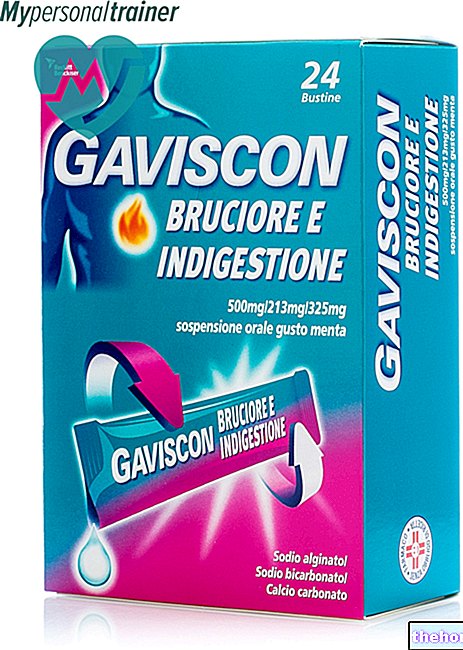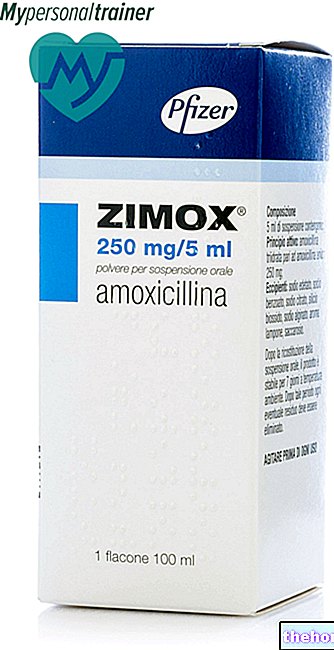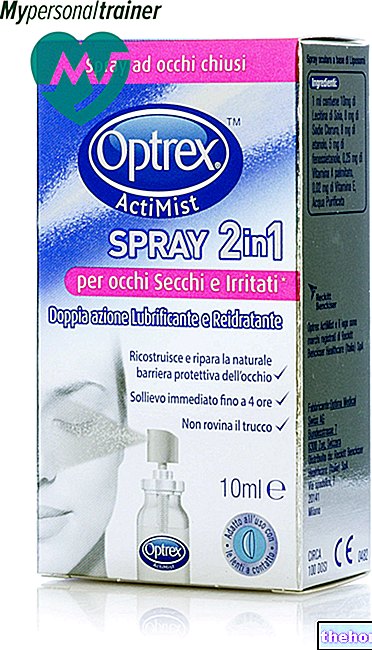Active ingredients: Econazole
Pevaryl 1% cream
Pevaryl 1% cutaneous spray, alcohol solution
Pevaryl 1% cutaneous powder
Pevaryl 1% cutaneous emulsion
Pevaryl 1% non-alcoholic cutaneous solution
Pevaryl package inserts are available for pack sizes: - Pevaryl 1% cream, Pevaryl 1% cutaneous spray, alcoholic solution, Pevaryl 1% cutaneous powder, Pevaryl 1% cutaneous emulsion, Pevaryl 1% non alcoholic cutaneous solution
- PEVARYL 1% vaginal cream, PEVARYL 50 mg pessary, PEVARYL 150 mg pessary, PEVARYL 150 mg prolonged release pessary, PEVARYL 1% cutaneous solution for external genitalia
Why is Pevaryl used? What is it for?
PHARMACOTHERAPEUTIC CATEGORY
PEVARYL is an antifungal for the local treatment of all fungal infections, including mixed infections with Gram-positive bacteria.
PEVARYL non-alcoholic cutaneous solution has been specially designed for the treatment of Pityriasis Versicolor; the treatment of the whole body surface makes it possible to eliminate the fungus even where the skin is still apparently healthy.
THERAPEUTIC INDICATIONS
The product is indicated in the therapy of:
- cutaneous mycoses caused by dermatophytes, yeasts or molds and infections caused by Gram-positive bacteria;
- mycosis of the ear canal (limited to the emulsion form) and of the nails;
- Pityriasis Versicolor.
Contraindications When Pevaryl should not be used
Hypersensitivity to the active substance or to any of the excipients.
Precautions for use What you need to know before you take Pevaryl
All pharmaceutical forms of PEVARYL are indicated for external use only.
PEVARYL is not intended for ophthalmic or oral use.
In case of sensitization or irritation reaction, discontinue use of the product.
Econazole nitrate powder contains talc. Avoid inhalation to prevent irritation of the airways, especially in children and infants.
The application of the spray forms must be done avoiding inhaling the product and making excessive and improper use of it.
Interactions Which drugs or foods can modify the effect of Pevaryl
Tell your doctor or pharmacist if you have recently taken any other medicines, even those without a prescription. There have been reports of interactions with oral anticoagulants, such as warfarin and acenocoumarol. In patients receiving oral anticoagulants, caution should be exercised and their anticoagulant effect monitored more frequently. An adjustment of the dosage of the oral anticoagulant drug may be necessary during treatment with econazole and after its discontinuation.
Warnings It is important to know that:
Ask your doctor or pharmacist for advice before taking any medicine
Pregnancy and breastfeeding
Due to systemic absorption, PEVARYL should not be used during the first trimester of pregnancy unless the doctor considers it necessary for the patient's health. PEVARYL can be used during the second and third trimester of pregnancy if the potential benefit for the mother overcomes the possible risks to the fetus.
Use PEVARYL with caution in breastfeeding patients.
Effects on ability to drive and use machines
You don't notice.
Important information about some of the ingredients of Pevaryl
This medicine contains propylene glycol which can cause skin irritation. The medicine contains benzoic acid which may be mildly irritating to the skin, eyes and mucous membranes.
Dose, Method and Time of Administration How to use Pevaryl: Posology
Unless otherwise prescribed by a doctor, PEVARYL must be applied morning and evening to the infected skin areas, with a light massage, until the mycosis has completely disappeared (1-3 weeks).
It is advisable to continue the application of PEVARYL for a few days after the disappearance of the mycosis.
Intertriginous spaces (for example the spaces between the toes, or the folds of the buttocks) in the wet stage should be cleansed with gauze or bandages before applying PEVARYL.
An occlusive dressing is recommended in the treatment of mycosis affecting the nails.
In the treatment of mycosis of the ear canal (only if there is no lesion of the eardrum) instill 1-2 drops of PEVARYL skin emulsion in the external ear canal 1-2 times a day, or insert a strip of gauze soaked with it.
PEVARYL cutaneous powder should be used as a complementary therapy of PEVARYL cream and cutaneous spray alcoholic solution. In the case of infections in the intertriginous spaces, the use of PEVARYL cutaneous powder may be sufficient.
PEVARYL non-alcoholic cutaneous solution has been specially designed for the treatment of Pityriasis Versicolor: it is advisable to sprinkle, for three consecutive evenings, the whole wet body by placing the product on a sponge without rinsing.
The drug carries out its action during the night. It should be washed off the next morning.
In this way, the treatment of the entire body surface makes it possible to eliminate the fungus even where the skin is apparently healthy.
If after 15 days from the end of the applications the Pityriasis Versicolor is not eradicated, repeat the treatment. To avoid relapses it is recommended to carry out the treatment again after 1 and 3 months.
The regular and prescribed use of PEVARYL is of decisive importance for recovery.
Overdose What to do if you have taken too much Pevaryl
Pevaryl is for cutaneous application only.
In case of contact with eyes, rinse with clean water or saline and seek medical attention if symptoms persist.
In case of accidental ingestion / assumption of an excessive dose of PEVARYL, nausea, vomiting and diarrhea may occur to be treated with symptomatic therapy, however in any case notify your doctor immediately or contact the nearest hospital. If you have any questions about the use of PEVARYL, ask your doctor or pharmacist.
Pevaryl 1% cutaneous powder
The powder formulation contains talc: accidental massive aspiration of the powder can cause blockage of the airways, particularly in infants and children. Respiratory arrest should be treated with supportive therapy and oxygen. If breathing is impaired, the following measures should be considered: endotracheal intubation, material removal, and assisted ventilation.
Side Effects What are the side effects of Pevaryl
Like all medicines, PEVARYL can cause side effects, although not everybody gets them.
The most common reported side effects are itching, burning sensation of the skin and pain.
Less commonly reported side effects are: erythema, malaise and swelling.
In addition, cases of angioedema, contact dermatitis, rash, urticaria, blistering, skin exfoliation and hypersensitivity are also reported.
The use of products for topical use, especially if prolonged, can give rise to sensitization phenomena. If this occurs, suspend the treatment and contact your doctor.
In case of particularly intense local reactions it is necessary to suspend the treatment and consult the doctor.
Compliance with the instructions contained in the package leaflet reduces the risk of undesirable effects. If any of the side effects gets serious or if you notice any side effects not listed in this leaflet please inform your doctor or pharmacist.
Expiry and Retention
Expiry: see the expiry date indicated on the package.
Warning: do not use the product after the expiry date shown on the package.
The expiry date refers to the product in intact packaging, correctly stored.
Store at a temperature not exceeding 25 ° C.
Medicines should not be disposed of via wastewater or household waste. Ask your pharmacist how to throw away medicines you no longer use. This will help protect the environment.
Keep this medicine out of the reach and sight of children.
Emulsion: child resistant closure - how to open the bottle
Composition and pharmaceutical form
COMPOSITION
100 g of cream contain: active ingredient: 1.0 g econazole nitrate; excipients: mixture of esters of stearic acid with glycols; mixture of fatty acids with polyethylene glycol; vaseline oil; butylated hydroxyanisole; perfume 4074; benzoic acid; purified water.
100 g of alcoholic solution cutaneous spray - contain: active ingredient: 1.0 g econazole nitrate; excipients: ethyl alcohol; propylene glycol, perfume 4074; tris (hydroxymethyl) amino methane.
100 g of cutaneous powder contain: active ingredient: 1.0 g econazole nitrate; excipients: precipitated silica; perfume 4074; zinc oxide; talc.
100 g of skin emulsion contain: active ingredient: 1.0 g econazole nitrate; excipients: precipitated silica; mixture of esters of stearic acid with glycols; mixture of fatty acids with polyethylene glycol; vaseline oil; butylhydroxyanisole; benzoic acid; perfume 4074; purified water.
100 g of non-alcoholic cutaneous solution contain active ingredient: 1.0 g econazole; excipients: polysorbate 20; benzyl alcohol; sorbitan monolaurate; N- [2-hydroxyethyl] -N- [2- (laurylamino) -ethyl] amino acetic acid sodium salt of 3,6,9-trioxadocosyl sulfate; polyoxyethylene glycol 6000 distearate; purified water.
PHARMACEUTICAL FORM AND CONTENT
Cream 1%: 30 g tube
1% alcohol solution cutaneous spray: bottle 30 g
Skin powder 1%: bottle 30 g
Skin emulsion 1%: bottle 30 ml
Non-alcoholic skin solution 1%: 6 sachets 10 g
Source Package Leaflet: AIFA (Italian Medicines Agency). Content published in January 2016. The information present may not be up-to-date.
To have access to the most up-to-date version, it is advisable to access the AIFA (Italian Medicines Agency) website. Disclaimer and useful information.
01.0 NAME OF THE MEDICINAL PRODUCT
PEVARYL
02.0 QUALITATIVE AND QUANTITATIVE COMPOSITION
Pevaryl 1% cream
100 g of cream contain:
active ingredient: econazole nitrate 1.0 g
Pevaryl 1% cutaneous spray, alcohol solution
100 g of alcoholic cutaneous solution contains:
active ingredient: econazole nitrate 1.0 g
Pevaryl 1% cutaneous powder
100 g of skin powder contain:
active ingredient: econazole nitrate 1.0 g
Pevaryl 1% cutaneous emulsion
100 g of skin emulsion contain:
active ingredient: econazole nitrate 1.0 g
Pevaryl 1% non-alcoholic cutaneous solution
100 g of non-alcoholic cutaneous solution contains:
active ingredient: econazole 1.0 g.
For the full list of excipients, see section 6.1.
03.0 PHARMACEUTICAL FORM
Cream, alcoholic skin solution, skin powder, skin emulsion, non alcoholic skin solution
04.0 CLINICAL INFORMATION
04.1 Therapeutic indications
The product is indicated in the therapy of:
• cutaneous mycoses caused by dermatophytes, yeasts and molds;
• skin infections caused by Gram-positive bacteria: streptococci and staphylococci;
• mycotic external otitis, mycosis of the ear canal (limited to the skin emulsion form);
• onychomycosis
• Pityriasis Versicolor
04.2 Posology and method of administration
PEVARYL must be applied morning and evening, in the infected skin areas, with a light massage, until the mycosis has completely disappeared (1-3 weeks).
It is advisable to continue the application of PEVARYL for a few days after the disappearance of the mycosis.
Intertriginous spaces (eg interdigital spaces of the foot, folds of the buttocks) in the wet stage should be cleansed with gauze prior to application of PEVARYL.
An occlusive dressing is recommended in the treatment of onychomycosis.
In the treatment of otomycosis (only if there is no lesion of the eardrum) instill 1-2 drops of PEVARYL skin emulsion 1-2 times a day, or insert a strip of gauze soaked with it into the external auditory canal.
PEVARYL cutaneous powder should be used as complementary therapy of PEVARYL cream and alcoholic solution cutaneous spray.
In the case of intertrigo, the use of PEVARYL cutaneous powder may be sufficient.
PEVARYL non-alcoholic cutaneous solution: sprinkle, for three consecutive evenings, the whole wet body by placing the product on a sponge; do not rinse. The drug works during the night and must be washed off the following morning. If after 15 days from the end of the applications the Pityriasis Versicolor is not eradicated, repeat the treatment. To avoid relapses it is recommended to carry out the treatment again after 1 and 3 months.
The regular and prescribed use of PEVARYL is of decisive importance for recovery.
04.3 Contraindications
PEVARYL is contraindicated in patients with known hypersensitivity to the active substance or to any of the excipients.
04.4 Special warnings and appropriate precautions for use
All pharmaceutical forms of PEVARYL are indicated for external use only. PEVARYL is not for ophthalmic or oral use.
In case of sensitization or irritation reaction, discontinue use of the product.
Econazole nitrate powder contains talc. Avoid inhalation to prevent irritation of the airways, especially in children and infants.
The application of the spray forms must be done avoiding inhaling the product and making excessive and improper use of it.
04.5 Interactions with other medicinal products and other forms of interaction
Econazole is a known inhibitor of CYP3A4 and CYP2C9 cytochromes. Despite limited systemic availability after cutaneous application, clinically relevant interactions with other medicinal products may occur and some have been reported in patients receiving oral anticoagulants, such as warfarin and acenocoumarol. In patients receiving oral anticoagulants, caution should be exercised and the INR should be monitored more frequently. Dose adjustment of the oral anticoagulant drug may be necessary during treatment with econazole and after its discontinuation.
04.6 Pregnancy and lactation
Pregnancy
In animal studies econazole nitrate did not show teratogenic effects but did show foetotoxic effects in rodents at maternal subcutaneous doses of 20 mg / kg / day and maternal oral doses of 10 mg / kg / day. The relevance of this effect in humans is unknown.
In humans, after topical application on intact skin, the systemic absorption of econazole is poor (health of the fetus and newborn due to PEVARYL.
Due to systemic absorption, PEVARYL should not be used during the first trimester of pregnancy unless the doctor considers it necessary for the patient's health.
PEVARYL can be used during the second and third trimester of pregnancy if the potential benefit to the mother outweighs the possible risks to the fetus.
Feeding time
After oral administration of econazole nitrate to lactating rats, econazole and / or its metabolites were excreted in human milk and detected in pups. It is not known whether dermal administration of PEVARYL can cause sufficient systemic absorption of econazole to produce concentrations. detectable of the same in human breast milk.
Caution should be used when PEVARYL is administered to breastfeeding women.
04.7 Effects on ability to drive and use machines
You don't notice.
04.8 Undesirable effects
Data from clinical studies
The safety of econazole nitrate cream (1%) and econazole nitrate emulsion (1%) was evaluated in 12 clinical studies involving 470 subjects, who received the administration of at least one of the formulations. Based on the safety data collected from these clinical trials, the most commonly reported adverse drug reactions (ADRs) (incidence ≥ 1%), were (with incidence%): pruritus (1.3%), burning sensation of the skin (1.3%) and pain (1.1%).
Adverse drug reactions (ADRs) reported with the use of PEVARYL dermatological formulations both in clinical trials, including the adverse reactions listed above, and in post-marketing experience are listed below.
Frequencies are reported according to the following convention: Very common ( ≥1/10); Common ( ≥1/100, ≥1/1.000, ≥1/10.000,
In the table below, which lists the adverse reactions of the dermatological formulations of Pevaryl, all adverse reactions with a "known incidence (common or uncommon) are from clinical trial data and all adverse reactions with a" non-common incidence note come from post-marketing data.
Table 1: Adverse Drug Reactions
The use of products for topical use, especially if prolonged, can give rise to sensitization phenomena.
In case of hypersensitivity reactions it is necessary to interrupt the treatment and institute a suitable therapy.
04.9 Overdose
The pharmaceutical forms available are intended for topical application only. In case of accidental ingestion, nausea, vomiting and diarrhea may occur, to be treated with symptomatic therapy. If the product accidentally comes into contact with the eyes, wash with clean water or physiological solution. and seek medical attention if symptoms persist.
Pevaryl 1% cutaneous powder
The powder formulation contains talc: accidental massive aspiration of the powder can cause blockage of the airways, particularly in infants and children. Respiratory arrest should be treated with supportive therapy and oxygen. If breathing is impaired, the following measures should be considered: endotracheal intubation, material removal, and assisted ventilation.
05.0 PHARMACOLOGICAL PROPERTIES
05.1 Pharmacodynamic properties
Pharmacotherapeutic group: Antifungals for topical use, imidazole and triazole derivatives
ATC code: D01AC03
Econazole is a topical antifungal. Its activity extends to dermatophytes, yeasts and molds, thus including all human pathogenic fungi.
Econazole is also active against Gram-positive bacteria, an advantageous property in the case of mixed infections.
The non-alcoholic cutaneous solution pharmaceutical form has been studied for the treatment of Pityriasis Versicolor, a disease manifested by dandruff-like peeling of the skin due to Pityrosporum orbiculare.
Econazole carries out its action both at the level of the cell membrane of the pathogen, and by interfering with the biosynthesis linked to it. The exposure of fungal cells to the drug determines, in temporal succession, the appearance of the following phenomena:
• increased permeability of the cell envelope;
• entry of the drug into the cytoplasm;
• alteration of all membranous systems;
• appearance of decomposition products grouped in vesicles and accumulation of lipid substances.
This has a blocking effect on the metabolism of RNA, proteins and lipids.
05.2 Pharmacokinetic properties
Being a product for topical use, tests were carried out to verify a possible systemic absorption. In no case has a clinically significant systemic absorption of the active ingredient econazole been demonstrated in either animals or humans.
05.3 Preclinical safety data
Toxicological tests on various animal species have shown that PEVARYL is well tolerated. It is also neither teratogenic nor mutagenic.
06.0 PHARMACEUTICAL INFORMATION
06.1 Excipients
Cream
Excipients: mixture of esters of stearic acid with glycols; mixture of fatty acids with polyethylene glycol; vaseline oil; butylated hydroxyanisole; perfume 4074; benzoic acid; purified water.
Alcoholic solution skin spray
Excipients: ethyl alcohol; propylene glycol; perfume 4074; tris (hydroxymethyl) amino methane.
Skin powder
Excipients: precipitated silica; perfume 4074; zinc oxide; talc.
Skin emulsion
Excipients: precipitated silica; mixture of esters of stearic acid with glycols; mixture of fatty acids with polyethylene glycol; vaseline oil; butylhydroxyanisole; benzoic acid; perfume 4074; purified water.
Non-alcoholic skin solution
Excipients: polysorbate 20; benzyl alcohol; sorbitan monolaurate; N- [2-hydroxyethyl] -N- [2- (laurylamino) -ethyl] amino acetic acid sodium salt of 3,6,9-trioxadocosyl sulfate; polyoxyethylene glycol 6000 distearate; purified water.
06.2 Incompatibility
Not relevant
06.3 Period of validity
Cream: 2 years
Alcoholic solution skin spray: 5 years
Skin powder: 3 years
Skin emulsion: 3 years
Non-alcoholic skin solution: 3 years
These data are valid for the product in intact and correctly stored packaging.
06.4 Special precautions for storage
Emulsion, skin spray, alcoholic solution and cream: store at a temperature not exceeding 25 ° C.
Skin powder: this medicinal product does not require any special storage conditions.
PEVARYL, like any other medicine, must be kept out of the reach of children.
06.5 Nature of the immediate packaging and contents of the package
1% cream: 30 g tube
1% cutaneous spray alcoholic solution: bottle 30 ml
1% cutaneous powder: bottle 30 g
1% skin emulsion: bottle 30 ml
1% non-alcoholic cutaneous solution: 6 sachets 10 g
The tube is in aluminum painted with epoxy resins; the bottle of skin emulsion and skin powder is made of high density polyethylene (Lupolen); the spray containers are aluminum monoblocs.
The envelope containing the non-alcoholic skin solution is aluminum paper painted with polyacrylonitrile.
Not all pack sizes may be marketed
06.6 Instructions for use and handling
No particular recommendations.
Unused medicine and waste derived from this medicine must be disposed of in accordance with local regulations.
07.0 MARKETING AUTHORIZATION HOLDER
Janssen-Cilag SpA
Via M.Buonarroti, 23
20093 Cologno Monzese (MI)
08.0 MARKETING AUTHORIZATION NUMBER
Pevaryl 1% cream 023603018
Pevaryl 1% cutaneous spray alcoholic solution 023603196
Pevaryl 1% cutaneous powder 023603044
Pevaryl 1% cutaneous emulsion 023603069
Pevaryl 1% non-alcoholic cutaneous solution 023603145
09.0 DATE OF FIRST AUTHORIZATION OR RENEWAL OF THE AUTHORIZATION
July 1978 / June 2010
10.0 DATE OF REVISION OF THE TEXT
04/2015




























